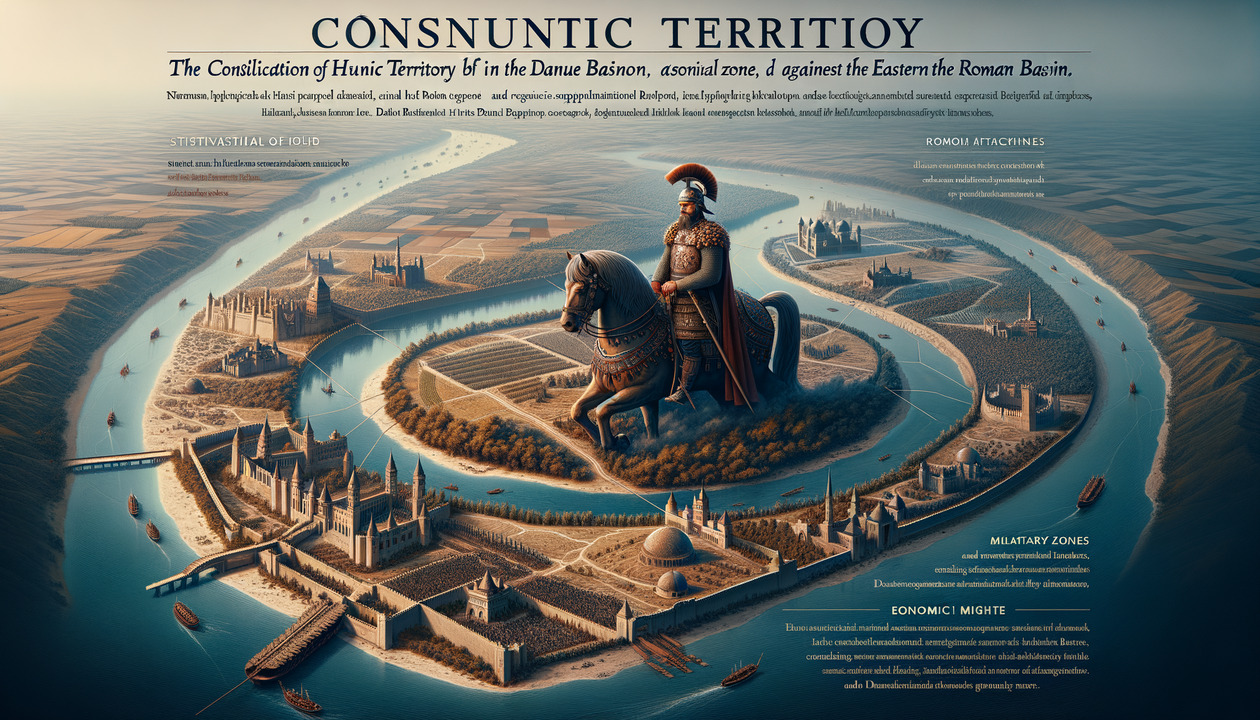
Consolidation of Hunnic Territory in the Danube Basin
Attila managed a vast region which served as the base for his operations. This consolidation allowed for strategic control and resource mobilization across his domain.
Consolidation of Hunnic Territory in the Danube Basin
In the annals of history, few figures evoke as much intrigue as Attila the Hun, the ruthless warrior who spearheaded the consolidation of Hunnic power in the 5th century. Central to his empire's might was the strategic unification of territories along the Danube Basin, a feat that underscore his prowess both as a military strategist and an innovative leader. Attila’s consolidation of this key region was pivotal in transforming the Huns from a loosely affiliated federation of tribes into a formidable empire capable of challenging the greatest powers of Europe.
Strategic Control Over a Pivotal Region
The Danube River, flowing through Central and Eastern Europe, was a natural corridor for commerce and military movements, presenting immense strategic value. By exerting control over the Danube Basin, Attila secured a vital supply line and a geographic buffer against potential threats from rival entities such as the Eastern Roman Empire. The consolidation of this region enabled the Huns to effectively mobilize resources, establish administrative zones, and coordinate military campaigns with unprecedented efficiency.
This strategic control also facilitated Attila's ability to impose tributes on Roman territories, expand northwards towards the Baltic, and bolster the domain's economic might. By centralizing power within the Danube region, Attila ensured that his empire had both the strategic depth and logistical sophistication to sustain prolonged military engagements.
Resource Mobilization and Military Expansion
A crucial aspect of Attila’s consolidation efforts was the effective mobilization of resources across his-controlled territories. The Danube Basin, rich in fertile land and traversed by crucial trade routes, provided the Huns with abundant agricultural produce and access to goods from as far as the Mediterranean. Attila adeptly harnessed these resources to supply his armies, strengthen alliances with subjugated tribes, and maintain the infrastructure needed for sustained military campaigns.
The consolidation of such a vast and resource-rich area also allowed Attila to innovate military strategies, integrating conquered peoples into his forces, thereby expanding the military might of his empire. This diverse composition of troops enabled Attila to employ a range of tactics on the battlefield, adapting swiftly to various combat scenarios.
Legacy of Hunnic Consolidation
Attila's unification of the Hunnic territories around the Danube had enduring consequences for the region and beyond. While his empire did not survive long after his death, the impact of his territorial consolidation reshaped the political landscape of Europe. It led to shifts in power dynamics that influenced the course of history, contributing to the eventual transformation of the Roman world and the emergence of medieval European states.
In conclusion, Attila's consolidation of the Danube Basin was a defining element of his reign, illustrating how strategic territorial management could elevate a confederacy into a robust and influential empire. This achievement not only highlights Attila's capabilities as a leader but also underscores the significance of geographic and resource control in the annals of military history.